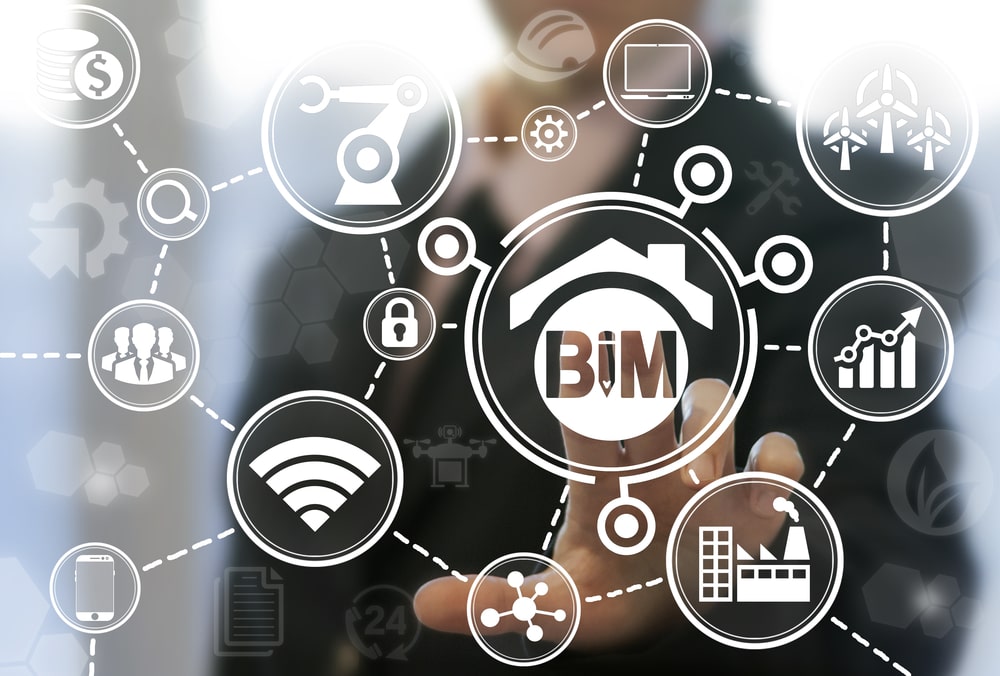Features - Business
How BIM can impact manufacturing

Building information modelling (BIM) has revolutionised the construction sector, by digitalising processes and enabling new ways for construction professionals and architects to collaborate. But where are the opportunities in manufacturing? Here Jonathan Wilkins, marketing director at industrial automation parts supplier EU Automation, explains how manufacturers can better interact with their supply chains using BIM.
According to research by Heriot-Watt University, the UK’s construction industry must build 340,000 houses a year until 2031 to meet demand. The industry is under pressure to meet this target with high-quality infrastructure, both for domestic and industrial purposes.
To help achieve this, construction companies are investing in advanced technologies to improve their productivity and quality.
One technology the construction industry is standing behind is BIM, a digital monitoring program that helps everyone involved in a project to optimise the building process. It provides a platform for managing all construction information throughout the lifecycle of the project and enables visualisation of components to see how different systems interact. Closer collaboration combined with the ability to flag up any conflicts helps to increase efficiency during the design phase and reduce the risk of mistakes.
Due to its benefits, the UK Government mandated an absolute minimum of BIM level two on all centrally-procured public projects from 2016. While BIM level three is yet to be strictly defined, there are ways that construction businesses can go above and beyond what is required.
Manufacturing demand
Construction is not the only industry feeling the pressure to digitalise. Manufacturers must adopt advanced technologies in order to remain competitive and meet consumer demand. Companies that manufacture products for buildings can use BIM to ensure they can help contractors and remain competitive in their own market.
The success of a building project depends largely on the information the digital model can gather. If a manufacturer wants their product to be used during an infrastructure project, they must make it available during digital modelling.
Before using advanced technologies, engineers were limited in product choice to what their wholesaler had in the warehouse. Now, engineers are presented with thousands of options from brands across the world at the click of a button. Manufacturers should ensure as much information as possible is available digitally so that architects can clearly see their product when using BIM and understand how it will impact the design of the building.
BIM in manufacturing
The design and construction of a facility provides a good opportunity to collect data to input into a digital twin. This process can begin with BIM so that when construction is complete, the manufacturer can connect sensors to equipment to form a live digital representation of the facility in real-time. However, for this to happen successfully, manufacturers must be aware of how BIM data can be used in a digital twin and ensure the correct data is collected and stored. To reap the rewards of digital twins, manufacturers must ensure that their modelling process is right from construction to production.
BIM has the potential to impact not just construction but a range of manufacturing industries. Manufacturers can establish themselves as innovators in the area by adopting technologies that improve their own processes and support the construction industry as it grows. Early adoption is the best way to remain competitive.
If you would like to read more articles like this then please click here.
Related Articles
More Features
- Ten years of progress on payment, pre-qualification and skills
19 May 25
The industry has made significant progress on late payment, pre-qualification, and competence since the formation
- Pagabo provides clarity on impacts of new NPPS and PPNs
12 Mar 25
The Labour government’s new National Procurement Policy Statement (NPPS) sets out strategic priorities for public
- How is the Procurement Act going to drive social value
24 Feb 25
The regulations laid out within the Procurement Act 2023 will go live today.






